
SakenowaRecord your sake experiences and discover your favorites
Timeline



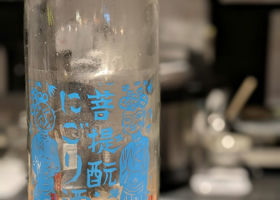
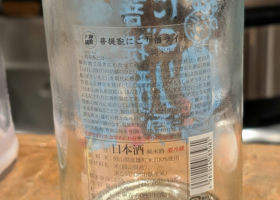
tjr
I drank it because I had felt the charm of Bodai yeast in Mimuro Sugi. It tastes like a lactic acid bacteria and has a great impact in spite of its low alcohol content. I think it is the strength of Omachi that shines through. I feel the pride of being a Bodai Hashimoto brewery and a brewery in Okayama.
Japanese>English
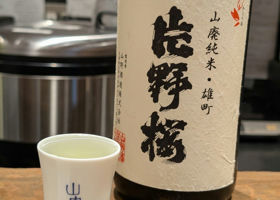
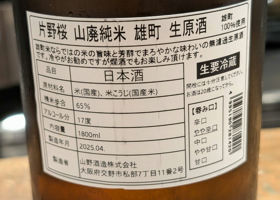
tjr
It is the perfect combination of unfiltered raw sake, Yamahai Junmai, and 100% Omachi, and as expected, it is extremely tasty. It has a rich, mellow, umami mouthfeel but is light and floral on the palate, and the ambivalent charm of this sake is a real knockout. The sake shop was located in a corner and did not sell it, but instead we bought a bottle of Katano Sakura's Aizan, which is a fresh yeast yeast yeast strain (for our enjoyment).
Japanese>English


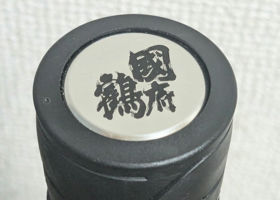
bouken
I bought it at a new store in Kansai.
They use Omachi, but it's not from Tokyo, is it?
It's fire-brewed, but fresh and slightly bubbly.
A little floral?
A little dry and bitter. Delicious, but I wish it had a little more flavor.
Like a thin peach?
Natural peach water 🍑.
I miss the hue hue 😆.
I was told it was an urban legend like the curse of peach natural water 🤔.
Japanese>English


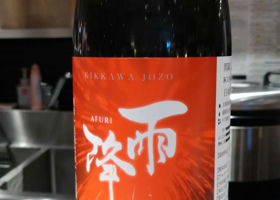
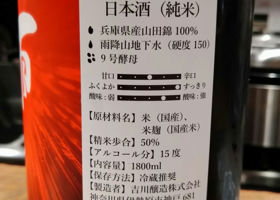
夢茶苦茶也
It has a bit of a schwarziness, acidity and umami.
This is the first time I'm drinking sake from the town I'm going to this year.
Once again, I am glad I was born in a country where there are so many delicious breweries and so many good ones!
Polishing ratio 50%.
Alcohol 15 degrees Celsius
Japanese>English
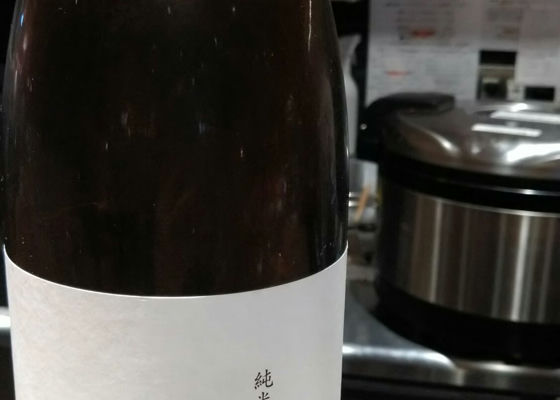
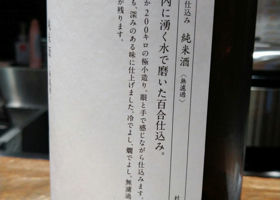

夢茶苦茶也
Compared to the first two drinks, I thought it would be lighter, but the alcohol content is 14%!
But it is unfiltered!
Refreshingly sweet and tasty, with a hint of acidity.
This is my first time drinking this brewery, but I'll try again sometime.
Polishing ratio 77
Japanese>English
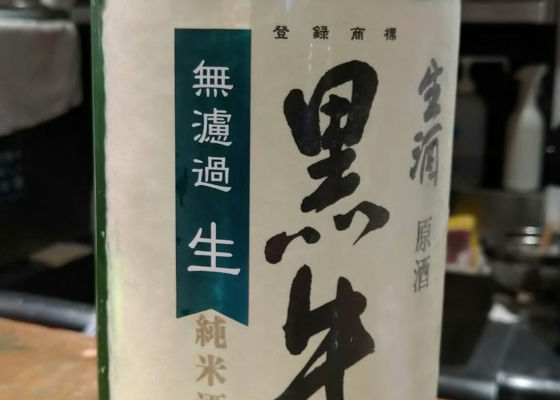
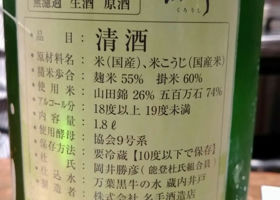
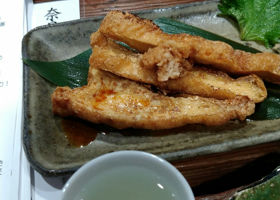
夢茶苦茶也
Sake made with 26% Yamadanishiki and 74% Ihyakumangoku.
I thought it would come with a bang and more, but it seemed to come in its own way.
But it was not bad, and I was glad to be able to drink it!
Alcohol 18-19%.
Yeast Association No. 9
Japanese>English
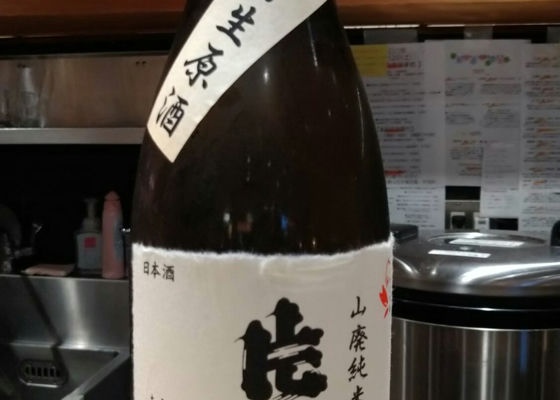
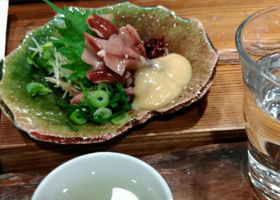
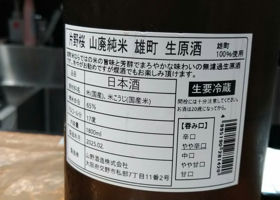
夢茶苦茶也
The umami and acidity came together nicely and it is very tasty!
I chose Omachi because it is an Omachi grape, and I am glad I did.
Rice polishing ratio 65
Alcohol 17%.
Japanese>English
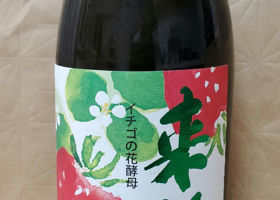
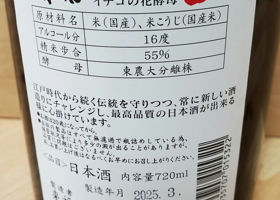
ぺっかーる
Next to Lychee Raifuku is Strawberry Raifuku.
It seems sweet, but it is not sweet.
No, I guess the aftertaste is not sweet.
It looks like strawberry, but it is not strawberry.
I also feel an astringent taste~.
But I think it is fruity.
I would like to drink pineapple or apple Raifuku too!
Japanese>English
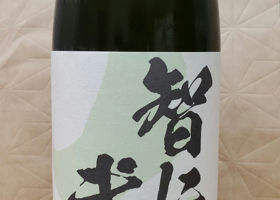
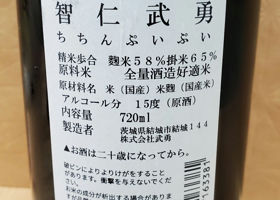
ぺっかーる
For the first time, it's a saga den den den den den let's go!
What is this?
Very tasty.
The balance of sweetness and sourness is excellent!
It is said to be made with Ogawa yeast.
I tried it with cream cheese.
It is delicious!
Isn't it the best cosmetics too?
It's so cool! Kakkiin!
Japanese>English
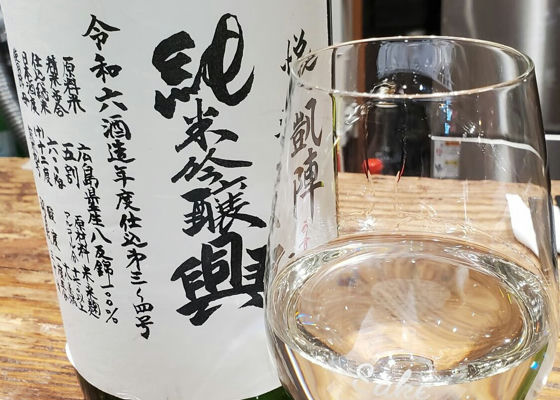
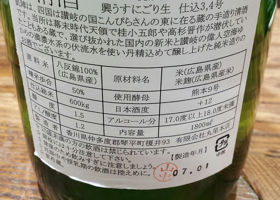

ぺっかーる
It was a sake that I had never had before.
I was really curious about this sake.
Oooooooh!
Fresh and delicious!
It was totally different from the taste I had imagined.
And then there is the Fig Cream Cheese.
Oh no! They go so well together!
It was the most delicious.
Japanese>English
ジェイ&ノビィ
Hi Pekkaal 😃
We had Etsukaijin for the first time the other day when we went out for a drink 🤗It was another one, so it was dry but delicious 😋.
Fig cream cheese! You've paired it with something so fashionable!
Japanese>English
ぺっかーる
Good evening, Jay & Nobby!
Next time I would like to try some dry sake too.
I'm sure there are more drinks that I've had, lol!
I've been obsessed with cheese lately! It goes so well with it!
Japanese>English
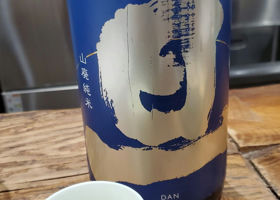
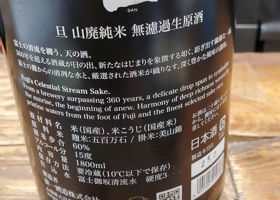
ぺっかーる
I see, so this is Sasaichi's brewery!
It tasted completely different from the Sasaichi I drank before!
It's so delicious~!
I am at a loss for words.
It was sweet and robust, but very easy to drink!
Japanese>English
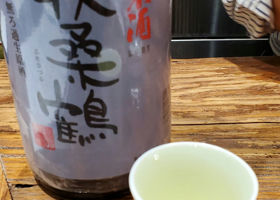
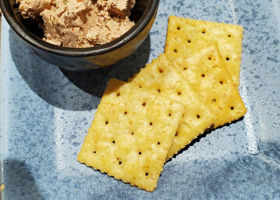
ぺっかーる
It's lunchtime and we are going to have a drink.
First, "Fusozuru."
The kanji was difficult for me.
It is very rich. The acidity seems to balance it out nicely.
Then, cheese, which I have been into recently!
I paired it with "firefly squid and cream cheese.
Mmmm, it is delicious!
Japanese>English


ちばさん
A crazy fruity juicy one that I love.
You can't go wrong with origami either. Delicious.
Japanese>English
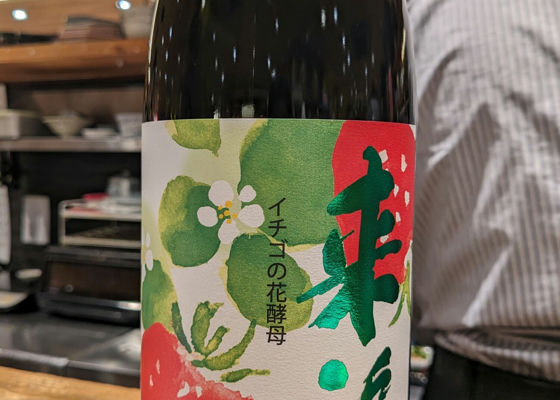
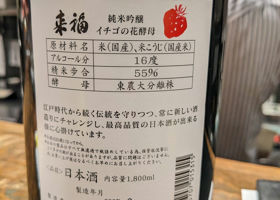
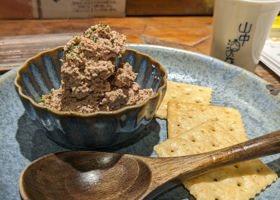
きなこ
I was attracted by the strawberry flavor, so I ordered it!
I put it in my mouth and drank it slowly, and at the end of it, I could taste strawberry 🍓.
I want to drink it while eating strawberries.
But the snack of firefly squid and cream cheese pate... it goes well with it!
Japanese>English
MutsuhassenURARAラベル
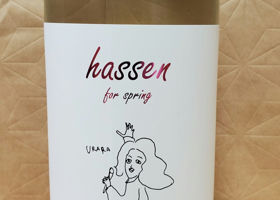
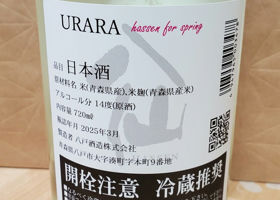
ぺっかーる
This is a targeted purchase!
The labels are fun!
The taste is also exciting. Very tasty.
Gorgeous aroma.
The mouthfeel is very beautiful.
Sweet and fruity.
I felt a faint fizz in the first glass.
I would drink a second glass of this!
I couldn't stop drinking it!
Japanese>English
ma-ki-
Good morning, Mr. Pekkaal!
I got this one too: ⤴️
Sweet and fruity is my favorite, so I'm looking forward to drinking it more and more 😁✨
I have to be careful not to drink too much 😊.
Japanese>English
ぺっかーる
Hi, ma-ki-!
It's very easy to drink, don't get me in trouble.............lol!
A few more days of cold weather. It will be spring in full swing!
Japanese>English